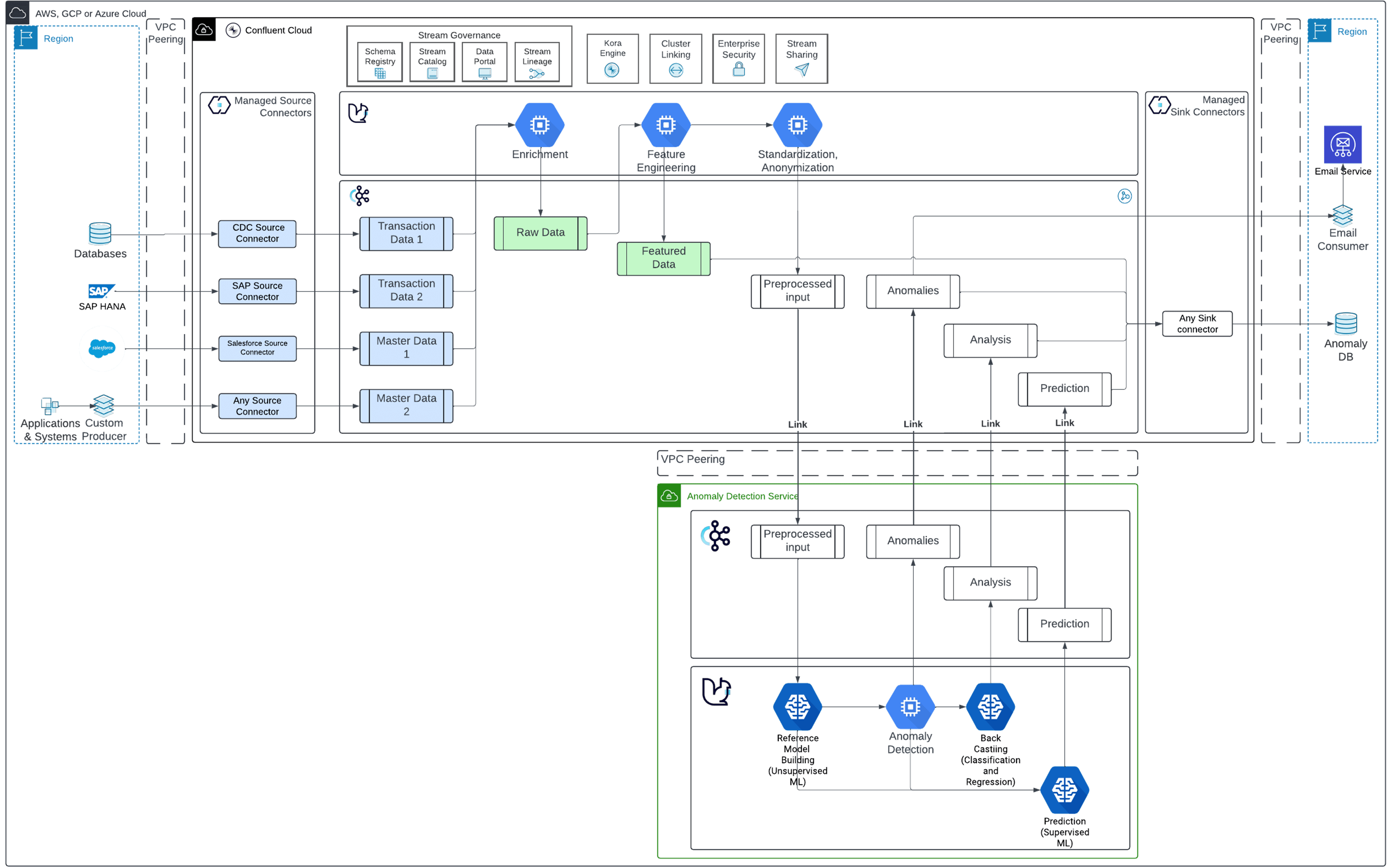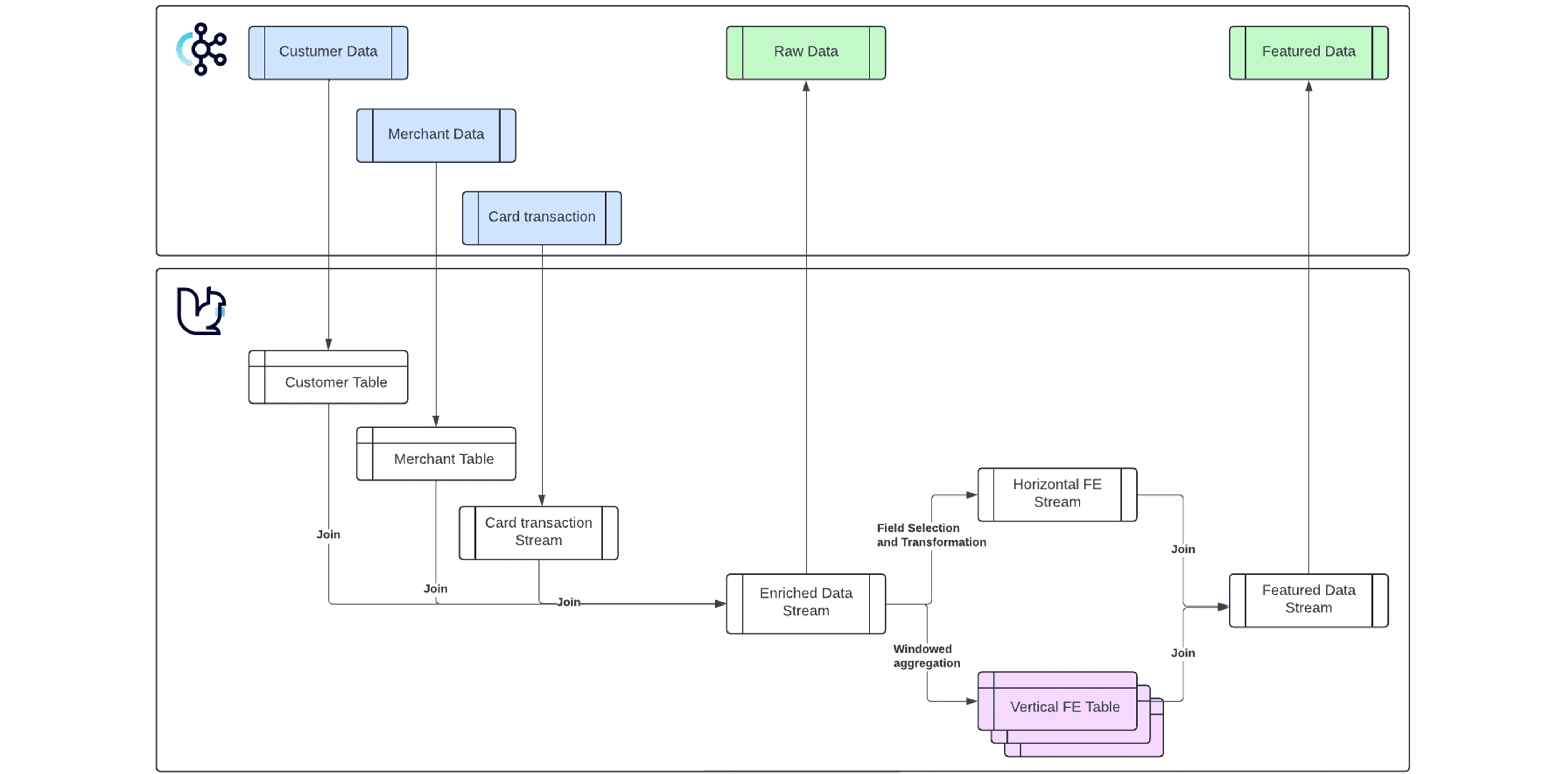[Virtual Event] GenAI Streamposium: Learn to Build & Scale Real-Time GenAI Apps | Register Now
Real-Time Anomaly Detection for Card Fraud Prevention
Combat fraud with an AI-driven, real-time anomaly detection system, powered by Informula and Confluent, to identify and prevent fraudulent activities the moment they occur. Taking a proactive approach reduces the risk of fraud, safeguards customer accounts, and minimizes financial losses.



Our system leverages advanced machine learning algorithms to analyze vast amounts of transactional data in real time. By integrating Confluent as a data streaming framework, we ensure that every transaction is monitored as it happens, without any delays. This continuous flow of data allows the AI to compare each transaction against established patterns of legitimate behavior, instantly flagging any deviations that could indicate fraud. For instance, the system can detect anomalies such as unusual transaction amounts, atypical locations, or sudden spikes in transaction frequency—common indicators of card fraud. Once an anomaly is detected, the system triggers an immediate alert, enabling financial institutions to take swift action, such as temporarily freezing the card, notifying the customer, or conducting further verification steps.

Moreover, the system continuously learns from new data, improving its ability to detect even the most subtle forms of fraud over time. This adaptive learning process ensures that the system remains effective against evolving fraud tactics, providing financial institutions with a cutting-edge tool to protect their assets and maintain customer trust.
By deploying our real-time anomaly detection system, financial institutions can significantly reduce the risk of card fraud, safeguard customer accounts, and minimize financial losses. This proactive approach not only enhances security but also helps to maintain a seamless customer experience by preventing fraudulent activities before they can cause harm.
Empower, Protect, and Optimize Your Business with Real-Time Anomaly Detection
Detect and prevent anomalies in real time with our AI-driven solution, powered by Confluent. Safeguard your business from fraud, ensure operational continuity, and optimize decision-making with instant, actionable insights, all while reducing resource overhead.
Instantly identify and mitigate fraudulent activities, safeguarding your business and customers from financial losses.
Detect and resolve issues before they disrupt your operations, minimizing downtime and maximizing productivity.
Gain actionable insights in real time, allowing your team to make informed, data-driven decisions quickly.
Automate anomaly detection processes, reducing the need for manual monitoring and freeing up resources for strategic tasks.
Benefit from AI’s continuous learning capabilities, ensuring your system remains effective against new and emerging threats.
Proactively monitor for regulatory compliance issues, helping your business avoid costly fines and legal challenges.
Provide a seamless and secure experience for your customers, building confidence and loyalty in your brand.
Build with Confluent
This use case leverages the following building blocks in Confluent Cloud:
Streaming Architecture
Data Architecture
Streaming Architecture

Many IT systems and databases may contain data that are relevant to the events under investigation. We interpret all these components as source systems in our anomaly detection solution.
The identified databases and systems are connected to the Kafka topics in a unified format using the hundreds of available Confluent connectors.
Data from different locations are joined along the transactions as dimensional additional data.
The collected and supplemented transaction data are further correlated along the time dimension, aggregated and enriched with additional data.
The entire data vector is then converted into numbers and anonymized, i.e. all information that would be customer-sensitive data is removed without changing the characteristics of the data.
The resulting data is run through the system to build a reference model representing normality.
Once the reference model has been built, each new transaction is compared with the full reference model and the deviation, i.e. how much it deviates from the norm, is determined.
It is not enough to identify the anomaly, we also help you understand it. First, we form anomaly groups, identify the characteristics that strongly influence the basis of group formation, and rank the anomalies in terms of extremity.
A supervised machine learning model is used to analyze the relationship between normal events and the anomalies that occur after them, and for newly arriving otherwise normal events, we can predict that a new anomaly is likely to occur in a given anomaly group.
The anomaly analysis and forecast data is delivered via fully managed Confluent sink connectors for further processing.
The anomalies, together with source data and analysis data, are organized in a single database on the client's side for further analysis.
If an anomaly is detected, an email or other notification is sent to the client's systems.
Data Architecture

Join, windowing, aggregating
Customer Data, Merchant Data, Card transaction, Row Data, Featured Data
Resources
Contact Us
Contact Informula to learn more about this use case and get started.